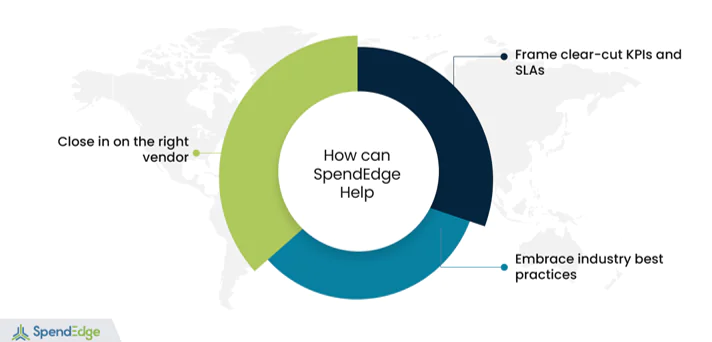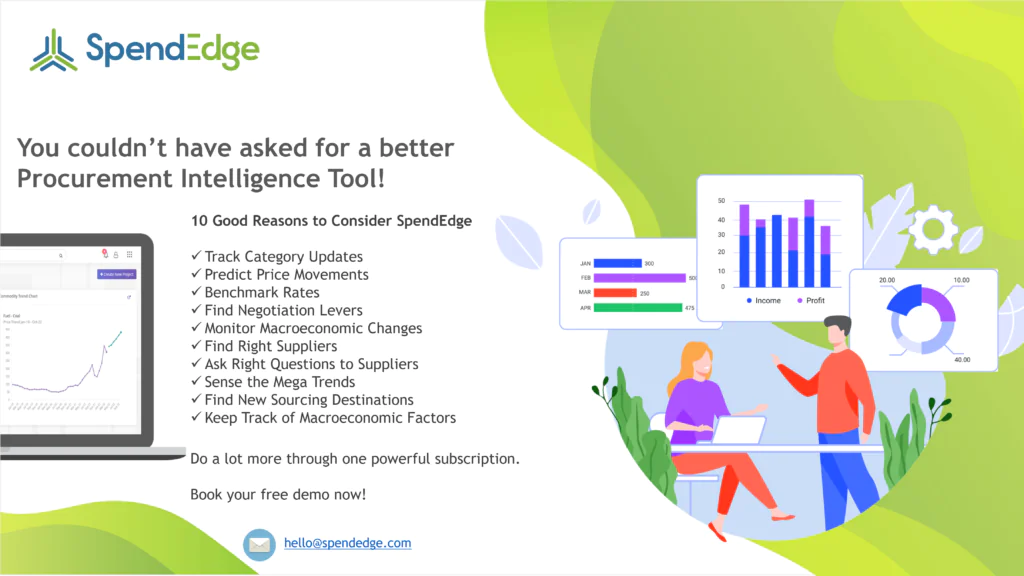By: Ankur Rishi
In addition to the risks carried forward from the previous year, namely, inflation and volatility, during the rest of 2023, utility procurement professionals have other important threats to tackle. The ground reality of contract management in utility procurement is far from desirable, and sub-optimal approaches to managing vendors are resulting in some missed targets (operating costs, service up time, delivery) by utilities. Clarity on material levels is exactly what many utilities are struggling to achieve. Their requirements might be complex to say the least, but still, utility procurementorganizations must develop a lucid understanding of what they really need. Increasingly, going forward, utilities are going to be gauged for their capability to do more with fewer kilowatt-hours of energy. In other words, utility procurement needs to go frugal to conserve scarce energy resources. To top it all, utilities are under increasing pressure to comply with a plethora of environmental regulations (e.g., Environmental Protection Agency’s Clean Air Act, CAA).
Risk assessment is crucial for the sector
Procurement of cost-intensive infrastructure, such as generators, transformers, line towers, water lines, and meters, involves significant capex commitment. Ideally a lot of careful consideration and evidence-based technical assessment should go into such purchase decisions. These risk assessment measures are essential for utilities to avoid costly service outages and safety issues in the future arising from various line faults. Apart from cost, there are regulatory implications utility procurement must bear in mind. These are growing issues for utility procurement organizations and their leadership.
Lack of visibility into inventory levels leaves utilities flying blind
Just knowing the stock levels of key inventory (e.g., safety gear, equipment spare parts, and raw materials like petroleum, surface water, ground water) across various locations is enough to take a load off any CPO’s chest. With an unbroken line of sight to their critical stock levels, utility procurement teams can hope to effectively blunt the impact of unplanned downtimes and operational disruptions. This is particularly significant since average fulfillment times for major electrical instruments have soared 3x from 2021 levels, causing consternation for power utilities. At the same time, a looming chip shortage has caught many water utilities off-guard.
Continuing to deliver on sustainability mandates is a priority for the sector
Gas-fired power plants spew various combustion gases (like CO2, NOx, SO2), particulate matter, and spent catalysts into the ambient air and water. While CO2 is a proclaimed climate offender, the other pollutants are associated with adverse respiratory effects. Chemicals and a lot of debris “backwashed” out of water system membranes must be allowed to settle out before the backwash water gets emptied into water bodies, and proper discharge elimination permits are a must. Delivering on their ESG commitments should be at the top of their wish list so far as utility procurement professionals are concerned. Their energy savings push, for instance, could start with a well-thought-out smart metering implementation.
How SpendEdge can help you

Close in on the right vendor
Experts at SpendEdge help businesses, including utility procurement organizations, access the best vendors in customer services with industry-leading skill sets as well as environmental, social, and governance (ESG) ratings to back them up. We limit our supplier pools to businesses that make the cut in terms of revenue and profitability, sustainability parameters, and quality of service, apart from demonstrated performance over the past many years.
Frame clear-cut KPIs and SLAs
Businesses of all sizes, small, medium, and large, work with our experts to get a firm handle on key performance indicators (KPIs) and service-level agreements (SLAs). With this grounding in performance measures, our clients’ procurement teams, ably assisted by our specialists at every step, develop meaningful KPIs/SLAs. Next, they start metering vendor performance against these pre-defined targets. As a result, operations at our client enterprise tend to be disruption-free while client teams are able to clock improved turnaround time (TAT).
Embrace industry best practices
With a deeper understanding of industry-leading guidelines and standards, utilities, especially in developed markets, can make more improved decisions in their utility procurement practices and make significant headway on the efficiency front. Utilities that command a competitive edge in the market are also ones that have adopted such best practices and gold standards in services and processes.
Success story: The power cost analysis brought to the negotiation table at a utility procurement organization
Our client is a privately held provider of premium broadband services in North America whose customers include small and medium enterprises as well as home offices in several US states. The client’s revenues exceeded its previous year revenues, and the company’s key portfolios continue to demonstrate strategic momentum. However, the sector at large faces market saturation and stiff competition, and pruning cost to maintain margins is a paramount consideration for most Internet service providers. Hiring staff onsite tends to be expensive, so the client considered shipping several transactional activities to emerging markets with lower costs of living and wage rates. The idea was to optimize operating costs and gain access to a deeper talent pool. The client’s procurement organization didn’t have too much time on its hands. So, in July/August 2022, they approached our experts in utility procurement with a brief that was short, simple, and to the point. The mandate for our teams was clear: Identify transactional activities in the client ecosystem for potential outsourcing as a first step. Next, shortlist vendors with proven experience in delivering fail-safe offshore services to North American utilities, intersecting cost, quality, responsiveness, and high availability. In particular, the client wanted our specialists to deliver granular views of the potential vendors’ cost structure, breaking down overall cost into at-a-glance components. The vendor’s environmental sustainability records, labor standards, diversity and inclusion initiatives, employee health and safety practices, as well as ethical compliance were also important yardsticks in vendor selection.
Soon after, in line with the client’s expectations, our experts identified up to four operations for potential offshoring, namely, accounts payable, accounts receivable, procurement, and data management. Further on, our specialists developed a pool of up to 15 vendors closely matching the requirements of the client’s utility procurement organization. At this point, it’s far from clear if the vendor is charging standard rates or overcharging. To resolve this issue, our analysts ran the vendor’s differing cost structures past our rigorous cost analysis template, wherein costs get broken down to a per-customer-agent-level. Indeed, this is the highest possible measure of granularity! Various cost components (e.g., labor, technology, management) and other overheads also came under our experts’ scrutiny. The team capped off the engagement with an incisive analysis of offshoring costs for 2-3 locations in emerging markets based on the preferences of the client’s procurement teams. The final shortlist presented to the client includes five offshoring providers in 2-3 countries. The client, so far as we understand, is keeping all options open. On one hand, the business would like to utilize our cost-structure analytics as a negotiation lever to nudge incumbent vendors to sweeten their billing rates. Alternatively, a little later, the client’s utility procurement organization might choose to go with a new vendor from our short list, that is if the existing vendor doesn’t “shape up” by then. Either scenario would give the client a clear advantage in the supply market.

Contact us now to solve your procurement problems!
Author’s Details
Ankur Rishi
Vice President, Sourcing and Procurement Intelligence
With more than 12 years of advisory experience, Ankur manages platform content and services within the sourcing and procurement vertical. Over the years, Ankur has provided consulting services to category leaders from chemicals, energy, and packaging industry, on varied topics, such as category strategy, spend analysis, commodity pricing, and clean-sheet analysis.




